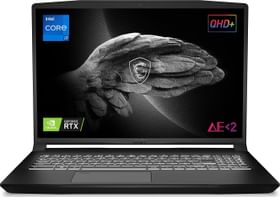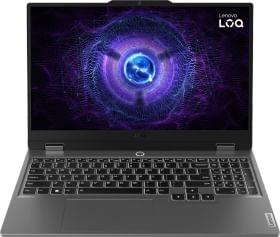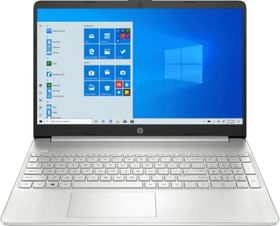Intel has announced the 14th Gen Meteor Lake CPU architecture during its Innovation 2023 event. Intel claims that the new architecture will revolutionize the computing experience with on-device AI capabilities and power-efficient performance. It is built on Intel 4 process technology and brings integrated Arc-based GPU to mobile processors. Read on to learn about its features in detail.
1. Built on Intel 4 Process Technology
Intel’s 14th-generation Meteor Lake mobile processors mark a huge paradigm shift in the company’s history. Intel is making its largest architectural change in 40 years with this technology. The new processors are built on Intel 4 process technology which delivers power efficiency not seen in Intel chipsets before.
Intel did away with the “nm” nomenclature in 2021 and came up with new naming conventions in line with the foundries like TSMC and Samsung. Intel 4 (earlier known as Intel 7nm) has a transistor density equal to TSMC’s 5/4nm and much higher than Samsung’s 4nm process node. It reflects parity across third-party foundries.
Despite being made on a 7nm process, Intel 4 offers 20% better performance per watt than the previous Intel 7 process. It utilizes EUV lithography for better efficiency and performance per watt. This is the reason Meteor Lake Chips will be the most power-efficient processors made by Intel. Intel 4 process node is only used in the Compute tile which consists of CPU cores- both P and E cores.
ALSO READ: Jio AirFiber Vs Airtel X Stream AirFiber: Which one should you opt for?
ALSO READ: Apple iPhone 15 Pro Vs iPhone 14 Pro: Which one should you buy?
2. Has 4 Unique Tiles
It is being called the largest architectural change because the company has managed to connect 4 disaggregated tiles and create a system-on-chip. It has integrated 4 independent tiles, including Compute, SoC, GPU, and IO, on 14th Gen mobile chips. These tiles are connected through Intel’s industry-leading Foveros 3D packaging technology which makes it act like a monolithic SoC, a chip on a single die. Let us look at the function of each tile now.
A. Compute Tile with New P-Cores and E-Cores
For compute tile, Intel has developed a new E-Core (Crestmont) and P-Core (Redwood Cove) microarchitecture. They are built on Intel 4 process technology that offers great power efficiency and performance.
The company has also partitioned compute-intensive IP cores and attached them independently to the SoC fabric. These IP Blocks can access memory independently and avoid keeping the core complex busy. It optimizes the power management of the chip.
B. SoC Tile with Low Power E-Cores
This tile is the most important one as it enables hybrid computing, which was first envisioned on 12th Gen Alder Lake processors. It is freshly built on 3D performance hybrid architecture and packs in low-power island E-Cores for an entire class of low-powered workloads on your laptop. The SoC features an integrated NPU for on-device AI capabilities. It also offers WiFi 6E, WiFi 7, and Bluetooth support on board. The best part is that Intel has brought AV1 support with Meteor Lake processors. It is a part of the Media Engine which can also render 8K HDR videos. SoC tile brings support for Native HDMI 2.1 and DisplayPort 2.1 standards and packs in an integrated memory controller as well.
C. New Arc-based GPU Tile
For discrete-level performance on laptops, Intel has gone all in and incorporated an Arc-based GPU on 14th Meteor Lake processors. The A-Series graphics from Intel has been well received and it has done well to add an integrated GPU based on the Arc architecture to its latest mobile processors.
In comparison to Intel Iris X graphics in 12th gen Intel processor, the new GPU delivers 2x performance per watt. Several changes have also been made to the architecture. The company has removed the Media IP core from the GPU and both are independently attached to the core complex memory. It will reduce significant traffic and enhance power efficiency.
With the new architecture on Meteor Lake, all IP blocks have independent paths to memory. So, the GPU and core complex need not be engaged resulting in better battery life.
D. IO Tile with PCIe Gen 5, Thunderbolt 4
The Intel 14th Gen Meteor Lake processors also feature a separate IO tile to provide the best input/output options on laptops. It supports the latest connectivity standards like Thunderbolt 4 and PCIe Gen 5. These will give unparalleled speed while using new-gen SSDs and external GPUs on Meteor Lake-powered laptops.
3. Integrated NPU on Intel 14th Gen Meteor Lake Chipsets
With the Meteor Lake processor, Intel is going to deliver AI at scale on laptops. The 14th Gen Meteor Lake processor has a built-in NPU as part of the SoC tile. This is the first time Intel has integrated an NPU directly into the processor. For sustained AI workloads, the NPU is going to perform much better than the CPU or GPU. Generally, the inference latency is very high on previous-generation Intel processors, but that will change now.
The AI engine is compatible with frameworks such as OpenVINO for deep learning model optimization. Intel has also integrated AI computing engines into the CPU and GPU. For low-latency AI tasks, the CPU will work well, but the GPU can deliver great throughput for 3D apps, rendering, and media-related tasks.
You can follow Smartprix on Twitter, Facebook, Instagram, and Google News. Visit smartprix.com for the most recent news, reviews, and tech guides.



































